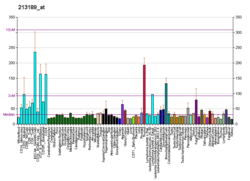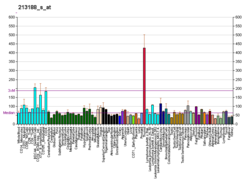| RIOX2 | |||||||||||||||||||||||||||||||||||||||||||||||||||
|---|---|---|---|---|---|---|---|---|---|---|---|---|---|---|---|---|---|---|---|---|---|---|---|---|---|---|---|---|---|---|---|---|---|---|---|---|---|---|---|---|---|---|---|---|---|---|---|---|---|---|---|
| |||||||||||||||||||||||||||||||||||||||||||||||||||
| Identifiers | |||||||||||||||||||||||||||||||||||||||||||||||||||
| Aliases | RIOX2 , MDIG, MINA53, NO52, ROX, MINA, MYC-induced nuclear antigen, MYC induced nuclear antigen, ribosomal oxygenase 2, JMJD10 | ||||||||||||||||||||||||||||||||||||||||||||||||||
| External IDs | OMIM: 612049; MGI: 1914264; HomoloGene: 12071; GeneCards: RIOX2; OMA:RIOX2 - orthologs | ||||||||||||||||||||||||||||||||||||||||||||||||||
| |||||||||||||||||||||||||||||||||||||||||||||||||||
| |||||||||||||||||||||||||||||||||||||||||||||||||||
| |||||||||||||||||||||||||||||||||||||||||||||||||||
| |||||||||||||||||||||||||||||||||||||||||||||||||||
| Wikidata | |||||||||||||||||||||||||||||||||||||||||||||||||||
| |||||||||||||||||||||||||||||||||||||||||||||||||||
Ribosomal oxygenase 2 is a protein that in humans is encoded by the RIOX2 gene. [5] [6]





